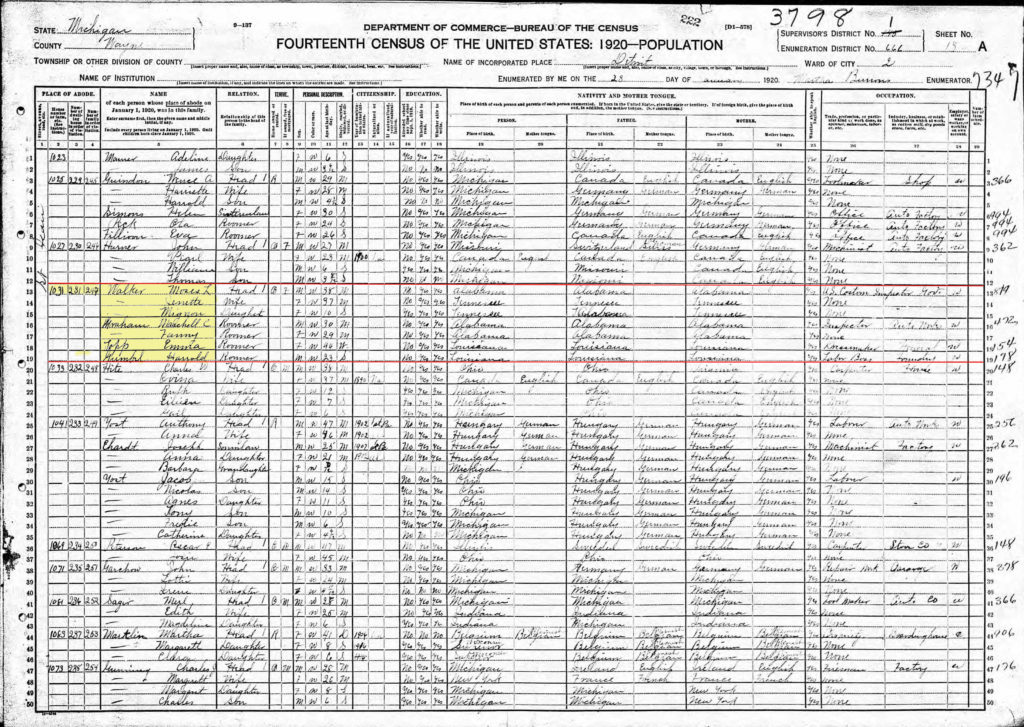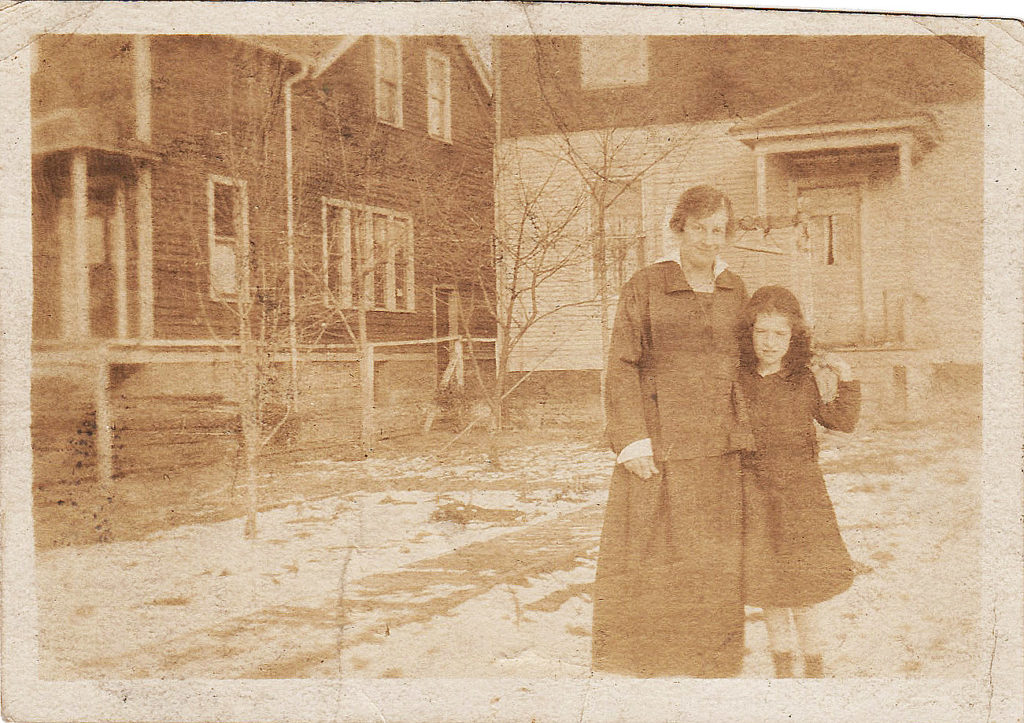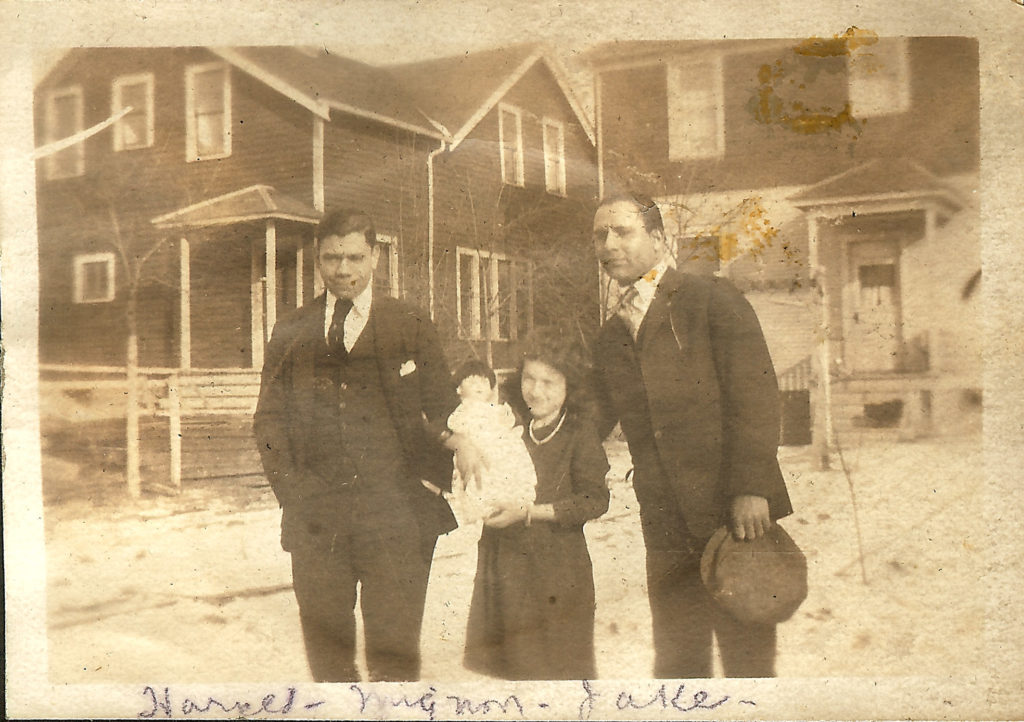I looked for the house my grandparents lived in in 1920 on the Sanborn Fire Insurance Maps, to no avail. I couldn’t even find the block. However, I do have the photos above which were taken at the house so at least we can see the backyard and their housemates. Perhaps it’s because the house was located in St. Clair Heights at the time.
Mershell Graham and Fannie Turner married on June 15, 1919. They left that same evening for Detroit where they boarded with friends from Montgomery, Moses and Jean Walker. Moses wasn’t related to my grandparents, but he was the brother of one of Fannie’s cousin’s wife, Margaret Walker McCall.
The Household of Moses and Jean Walker in 1920
Everybody in the household was wrongly labeled as “white”. They were all African American. Moses and Jean Walker, were old friends of my grandparents from Montgomery, Alabama. There were three family members and four boarders in the house.
Moses and Jeanette Walker owned their home free of mortgage. Moses was 38 years old and born in Alabama, as were his parents. He was literate, and had, in fact, attended business college. In 1920 he was employed by the US government as a Customs Inspector.
His wife Jeanette, was 38 and born in Tennessee, as were both of her parents. She was literate and not employed outside of the home in 1920.
Moses and Jeanette’s daughter Mignon Walker was born in Tennessee in 1909. She was 10 years old and was attending school.
My grandfather, Mershell Graham was 30 years old he and my grandmother, Fannie (Turner) Graham were both born in Alabama as were their parents. They had married the year before and Fannie was about seven months pregnant with their first child, Mary Virginia Graham. Both were literate. Mershell worked in an Auto plant as an inspector.
Harrold Gumble was 23 years old. He was born in Louisiana as were his parents. He was single and worked as a labor boss in a foundry. He was literate. Several years later he returned to New Orleans, married and raised three children there.
Mrs. Emma Davis Topp roomed with Moses and Jean Walker after her husband died in 1912. She was born in Mississippi and attended school through the 8th grade. She was a dressmaker.

All of their neighbors were listed as white. Most of them were immigrants or children of immigrants. Some worked in auto plants, there were two carpenters and several auto mechanics. All of the school age children, except one fifteen year old, attended school. None of the married women worked outside of the home. There were several unmarried women who worked in offices. Emma Topp was a dressmaker and there was a widow who kept a boarding house.
________________
You can see the letter from Fannie accepting Mershell’s proposal here The Proposal Accepted.
See the proposal letter here The Proposal – Migration Story.
To read all about the wedding click Announcement




How sad that they were listed as white on the Census. Why do you think this was? A clerical error? Or did they hope to be listed as white to avoid harassment somehow?
Maybe it’s silly, but I always stop and admire the penmanship on these old documents. To me, it seems more than just easy to read. There’s a fancy, decorative aspect, too, which seems to reflect a mindset from an era when it was ok to take your time and make things look pretty as well as be practical.
~Tui Snider, @TuiSnider TuiSnider.som – Exploring Historic Cemeteries & Symbolism
My assumption about the designation is that the person who answered the census taker was light complected and the census taker assumed that they were white. The neighborhood seems to be white. The census taker would not ask someone their race, they went by what they thought the person was. It’s nothing to be sad about, it doesn’t make any difference. Sometimes the same person would be listed as something different in each census.
Sometimes the penmanship is clear and wonderful. Sometimes it’s nearly impossible to make out. I do appreciate the good ones.
So much information, even if a bit of it is incorrect. You grandfather looks terribly dapper in his hat and coat, as does the lady next to him.
Tasha 💖
Virginia’s Parlour – The Manor (Adult concepts – nothing explicit in posts)
Tasha’s Thinkings – Vampire Drabbles
Yes there is a lot of information. We just got our 2020 census and there were only three or four questions – name, age, race, ethnic background. It will be no help at all to my descendants.
While the detail about literacy and occupation on earlier censuses is terrific, even the groupings of people in one house at one time is fascinating information.
In Australia our historic census returns were destroyed after the aggregate information was collated.
That’s sad. Such a loss of information. You can sometimes trace relatives by who lived in the same household.
How perfectly amazing to have those letters! Precious beyond belief! And the photos too, so atmospheric and sweet.
If only I could tumble into those photos! Having it all is the next best thing.
Hard to believe Sanborn did not include your ancestors’ home. An interesting story about the household — excellent research and loved the proposal and acceptance letters, too. Missed these the first time around.
Sanborn did not include every house in a given location. They didn’t just leave out my ancestors homes. I do think there was some mistake in this case because the street map seems to leave out several blocks and then pick back up.
On other maps the black section of town is not included. You will see the edges, but they stopped. They could have not counted other districts too, but I have noticed the black areas because that is what I’m looking for.
So very interesting. I always say I’m going to look into these things for our family but I never seem to…thankfully, we have a wonderful cousin who’s very into it all and he sends us updates from time to time. Happy Tuesday!
In my family, I am that cousin 🙂
I read the “the letter from Fannie accepting Mershell’s proposal” and absolutely love the way it’s been written: the language, the penmanship as well as the voice.
Her doubts about her cooking skills, the use of “Ha! Ha! and that one little kiss to end the letter: it makes her to be an extremely lovable person in my opinion.
I’m off to read his proposal now.
Thank you for sharing this gem and that darling photo of theirs Kristin.
It was a story passed down through the family that Nanny couldn’t cook when she got married and that Poppy, who had worked in the dining car on the railroad had to teach her. She was a wonderful cook by the time I knew her but my grandfather (Poppy) still cooked the turkeys on holidays.
I just read his letter of proposal to her. My! What a kind hearted gentleman he must’ve been.
Those ‘thousand kisses’ have me swooning.
Such a treasure these letters are Kristin.
He was a wonderful grandfather. Hardworking, thoughtful, upright – all words that I think of in regards to him. He made me a wonderful dollhouse that I still have. And he could fix anything.
I love the sense of community. People lived together and worked together whether family or not.
Amazing to see a 100 year old census. I agree ours was very blah
The Letter F
I like the sense of community too. Close friends often turn out to be tangentially related. Sometimes by marriage. Sometimes through informal “adoptions”.
Another interesting chapter. It is amazing how much information you have and how well-organized it is.
Since I spend so much time doing this, it’s not really amazing! Way to much time sitting here at the computer.
You’ve done an extraordinary amount of research. Do other family members help you with this? Or is it a passion project of your own?
When my aunts and uncles were alive I would ask them about things and they would tell me their memories. Cousins share photographs and stores from their branch of the family. So in that way they do help, but mostly I work on my own.
Fascinating. I’m also fascinated by the assumption. And don’t think that’s only in the past.
When I worked in Dublin, I was listed as Spanish at the tax office, because nobody bothered to ask where I actually come from.
Yes, if people think they know, they don’t bother to ask.